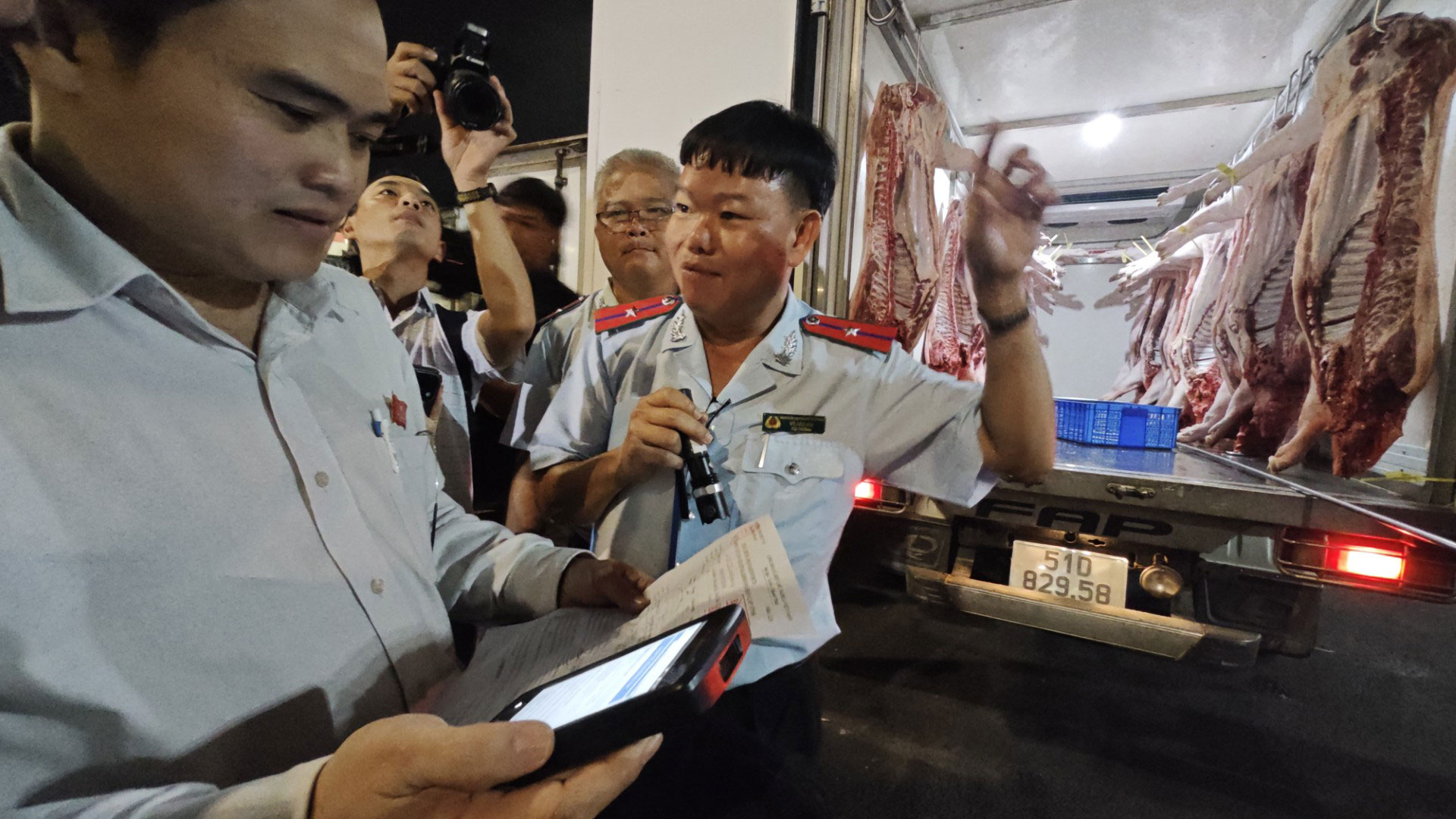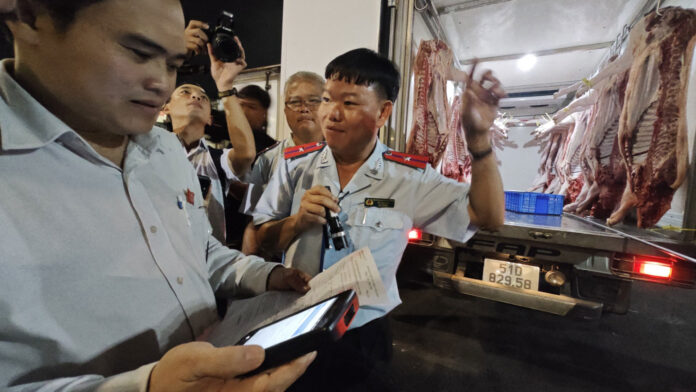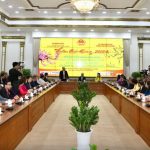Reporting to the supervision team, Mr. To Van Liem, Chairman of Hooc Mon Food Processing Joint Stock Company, said that in the first six months of 2024, the total processed slaughter volume was 339,700 pigs. The average capacity was 1,887 pigs/day, reaching only 47.17% of the designed capacity, resulting in inefficient business operations.
Mr. Liem explained that the live pig source was concentrated in Long An province, where they were slaughtered at handicraft facilities in Duc Lap district. The pork was then transported to Hooc Mon wholesale market, accounting for more than 50% of the total pork volume entering the market nightly. Before Ho Chi Minh City constructed industrial plants and mandated 100% industrial slaughter, the handicraft slaughterhouses in Long An province only slaughtered and supplied up to 50 pigs per day.
Ms. Nguyen Thi Hong Tham, Director of An Ha Service Co., Ltd. (Cu Chi district, Ho Chi Minh City), also shared that the current slaughter volume at their factory reached only 1,000 pigs per day, while the designed capacity was over 3,000 pigs per day. The reason lies in traders flocking to the province for slaughter due to less stringent control regulations compared to Ho Chi Minh City. “Transporting pigs to Long An incurs higher transportation costs and results in less fresh meat, but traders still opt for this option. We, as industrial pig slaughter factories, have cried for help multiple times but have not received any support. Currently, our factory is incurring losses as the slaughter processing fee is only VND 40,000-50,000 per pig, equal to the handicraft slaughter price in other provinces,” said Ms. Tham angrily.

Information on the origin traceability device did not match the animal health certificate
Notably, at Hooc Mon Food Processing Joint Stock Company, the supervision team discovered that the truck with license plate number 70H-02330, which was transporting live pigs for slaughter, did not have the origin traceability rings directly attached to the pigs’ legs but were kept separately.
At the Hooc Mon agricultural product wholesale market, in the area for checking goods entering the market, Mr. Cao Thanh Binh randomly selected two refrigerated trucks carrying pork into the market. He discovered that while these trucks had veterinary seal rings and origin traceability seal rings, when checked with the specialized device of the food safety management officers, the information did not match the accompanying health certificates.
When Mr. Cao Thanh Binh requested to detain the batch of pigs for further inspection, the representative of the food safety management team at the market explained that the health certificate had legal value, so the batch of goods was still allowed to enter the market normally. In this case, the team only reminded the relevant parties to input the data accurately.
The representative of Ho Chi Minh City Food Safety Authority also informed that wearing origin traceability rings was encouraged but not mandatory, so there was no penalty for non-compliance by the goods owners.
Mr. Cao Thanh Binh said that the Culture and Society Committee would closely monitor the management, identification, and traceability proposal for pork because the preliminary supervision revealed many loopholes. “Why is it necessary to wear origin traceability rings? What happens if these rings are not worn? Is there a monopoly in providing origin traceability rings? Did this company go through a bidding process?” Mr. Binh questioned.
Comprehensive regional connectivity
In addition to building strong physical infrastructure, Ho Chi Minh City needs to strengthen its soft connections with other provinces in the region in order to promote economic development. This includes prioritizing the training of skilled workforce and ensuring access to quality healthcare.
Emotional Kieu people when admiring Ho Chi Minh City from Metro Line 1
Ho Chi Minh City has undergone a remarkable transformation since the day I left. It now boasts a completely different appearance, exuding a fresh and vibrant energy. This sentiment was captured by Mr. Nguyen Duong Nam Phuong, a Vietnamese American, who was amazed by the city’s newfound liveliness.




















